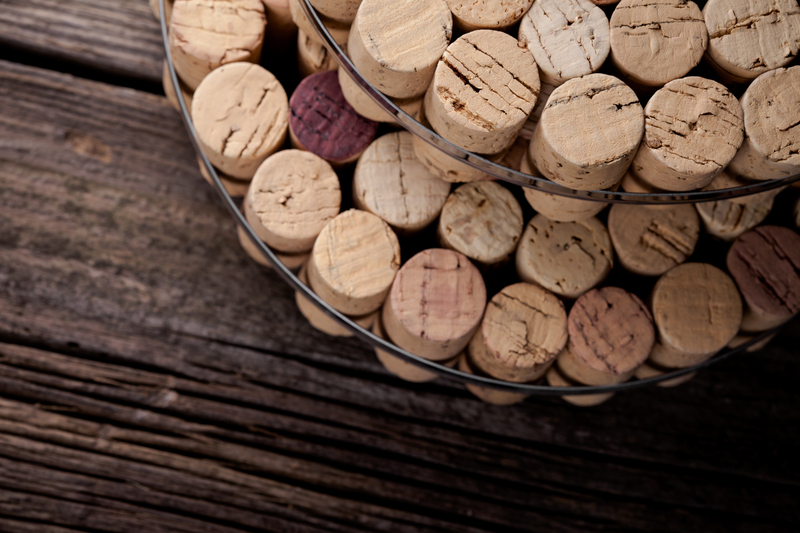Simple Steps to Properly Recycle Pots and Pans at Home
If you love cooking, you probably have a collection of worn-out cookware in your cabinets. From scratched non-stick pans to dented old pots, these items inevitably need replacing. But tossing them into the trash contributes to landfill overflow and environmental harm. The good news is, recycling pots and pans at home is simpler than most people realize--if you know the right steps.
This guide provides everything you need to know about how to recycle old pots and pans responsibly, from understanding what can actually be recycled to step-by-step procedures for giving your cookware a new life.

Why Should You Recycle Old Cookware?
Before getting into the nitty-gritty of the pot and pan recycling process, let's briefly explore why recycling your used cookware is important.
- Conserving Resources: Pots and pans are often made of metals like aluminum and stainless steel. Recycling them conserves raw materials and reduces the energy needed for new production.
- Reducing Landfill Waste: Cookware, especially metal varieties, can take many years to break down in a landfill. Recycling minimizes the burden on our waste management systems.
- Protecting the Environment: Proper disposal prevents harmful chemicals and metals from leaching into soil and groundwater.
- Supporting the Circular Economy: By ensuring your old cookware enters the recycling stream, you help create new products with fewer environmental impacts.
Understanding What Cookware Can Be Recycled
Before placing your old pots and pans in the recycling bin, check the type and condition of your cookware. Not all items can be recycled through residential curbside programs. Here's what you need to know:
The Different Types of Cookware Materials
- Stainless Steel: This durable material is highly sought after by scrap metal recyclers. Most stainless steel pots and pans (without non-stick coatings) are recyclable.
- Aluminum: Lightweight and common in cookware, aluminum is also easily recyclable, especially when free from additional coatings.
- Copper: High-value scrap metal yards accept copper pans, provided they don't have plastic handles or extensive coatings.
- Cast Iron: Heavy, long-lasting, and 100% recyclable. Many scrap yards gladly accept cast iron cookware.
- Non-Stick Coated (e.g., Teflon): These are trickier. Some recycling centers won't accept non-stick surfaces because they can contaminate the recycling process. Check local recycling guidelines.
- Ceramic or Glass: While these technically aren't metals, some centers take glass lids or pure ceramic cookware, but never combine them with metal recyclables.
Remember: Most curbside recycling programs do not accept cookware due to its size, weight, and mixed materials. Specialized recycling centers or scrap metal facilities are your best bet!
Step-by-Step Guide: How to Recycle Pots and Pans at Home
-
1. Inspect Your Cookware
Determine if your pots and pans are reusable, recyclable, or need special disposal. If they're lightly scratched or have only minor dents, consider donating before recycling. -
2. Remove Non-Metal Parts
For metal recycling, components like plastic handles, silicone coverings, or non-metal attachments should be detached. Use a screwdriver or pliers, and take appropriate safety precautions. -
3. Clean Thoroughly
Wash all pots and pans to remove greasy residues, food bits, or stubborn stains. Clean metal is much easier to process and more likely to be accepted. -
4. Separate by Material
If you have a mixture--say, some aluminum and some stainless steel--put them in separate piles. Scrap metal recyclers often pay by material type. -
5. Check Local Recycling Guidelines
Not all recycling centers are the same! Search your city's waste management website or call local centers to confirm whether they accept pots and pans. Ask about drop-off locations and rituals. -
6. Transport to the Proper Facility
Take your separated, cleaned cookware to the recommended metal recycling center or scrap yard. Some areas also offer community metal recycling events.
Alternative Ways to Dispose of Old Cookware
Sometimes, recycling isn't the only or best option. Here are a few alternative disposal methods for pots and pans:
Donation
- If your cookware is still functional, donate it to local charities, thrift stores, or shelters. Many organizations, such as Goodwill or The Salvation Army, accept gently used kitchen items.
- Offer through local online marketplaces, like Facebook Marketplace, Craigslist, or Freecycle. You'd be surprised how many people are happy to rehome your preloved pans.
Repurposing and Upcycling Ideas
If recycling options are limited in your area, get creative before sending cookware to the landfill!
- Plant Pots: Turn old pots into unique planters for your garden or balcony by adding soil and your favorite flowers or herbs.
- Storage Bins: Organize your workspace or shed by using pans as creative storage containers.
- Bird Feeders or Baths: A shallow pan can serve as a bird bath or feeder when suspended from a tree.
- Art Projects: Paint or decorate old cookware for rustic home decor or garden art.
Hazardous Waste Centers (For Non-Stick and Specialty Coatings)
If your old cookware has damaged non-stick coatings or other specialty finishes (like ceramic-coated pans), these can sometimes be considered hazardous waste. Check with your municipal or county hazardous waste collection center for guidance.
Special Considerations: Non-Stick and Coated Cookware
Many people wonder about how to recycle non-stick pans, which are common in home kitchens but challenging for recyclers. Here's what to keep in mind:
- Local Variations: Some recycling centers accept non-stick pans if the coating is intact, while others don't. Always confirm in advance.
- Remove the Coating: If you're handy, you can try sanding off Teflon or ceramic coating before recycling the metal base, though this requires caution and proper safety gear.
- Special Drop-Offs: Some cookware manufacturers offer take-back programs when you buy a new pan. Brands like Calphalon and TerraCycle sometimes provide recycling kits or collection days.
Frequently Asked Questions about Recycling Pots and Pans
-
Can I put old pots and pans in my curbside recycling bin?
Usually not. Most municipal recycling programs don't handle cookware due to its materials and potential contamination. Use certified recycling or scrap metal centers. -
How do I know if my local scrapper accepts cookware?
Contact your local scrap metal recycler or check online directories. Most are happy to take metals like aluminum, copper, and iron. -
Is it safe to recycle pots with damaged non-stick coatings?
Only if your center accepts them. Otherwise, consult hazardous waste or manufacturer recycling programs to avoid environmental risks. -
What can't be recycled?
Ceramic, glass, and extensively coated cookware may need alternative disposal. Avoid placing these in metal scrap bins.

Tips for Preventing Cookware Waste in the Future
Recycling pots and pans at home is rewarding and eco-friendly--but reducing the frequency of disposal is even better! Here's how to lower your household cookware waste over time:
- Invest in Quality: Buy durable, long-lasting cookware that resists warping, scratching, or coating failure.
- Follow Proper Maintenance: Use wooden or silicone utensils to preserve surfaces, and avoid abrasive cleaning pads.
- Repair When Possible: Handles and knobs can often be replaced or tightened before you consider tossing the whole pan.
- Buy Second Hand: Thrift shops are great places to find functional, gently-used cookware at a fraction of the price.
- Reuse Creatively: Repurpose old cookware within your home before sending it elsewhere or recycling it.
Conclusion: Make Recycling Cookware a Healthy Habit
Learning how to recycle pots and pans at home is a simple way to protect the environment and encourage sustainable living. By following these steps and exploring donation or upcycling alternatives, you can keep your cookware out of landfills and contribute to a greener future.
So, the next time you retire your favorite frying pan or battered pot, follow these simple, environmentally responsible steps for a cleaner, healthier planet.
Remember: Every recycled pot or pan means fewer raw materials used, less landfill waste, and a stronger commitment to sustainable living. Happy recycling!
